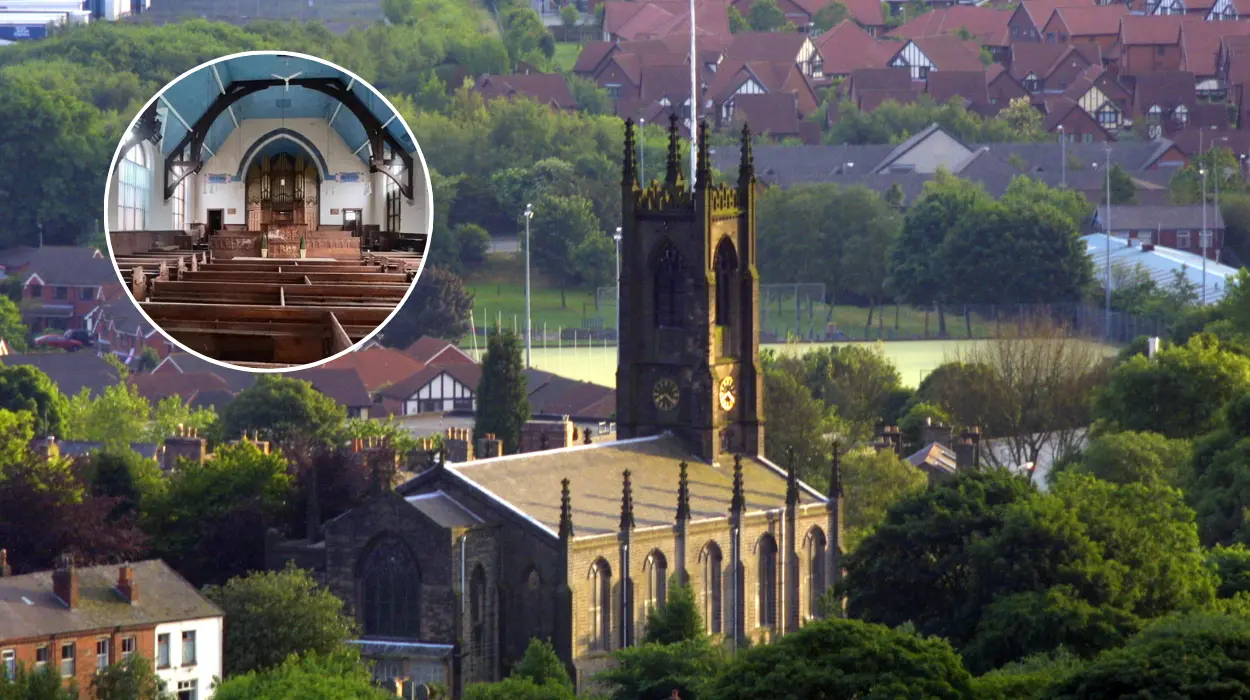Key Points
- Northern Property People Investments has applied to convert the Independent Methodist church in Lee Lane, Horwich, into a community café.
- The historic church, built in 1906, is currently vacant and has been unused for over two years.
- The conversion plan includes preserving key architectural and historical features such as stained-glass windows, the organ, pulpit, pews, and wrought iron gate.
- External renovations will repair brickwork and slate roofing, and landscaping improvements will be made around the site.
- Internal modifications include refurbishing pews for seating and adding a new kitchen in a modern extension at the rear.
- The proposal aims to ensure the building's long-term use and upkeep, honouring its heritage while providing community benefits.
- The planning application is currently under review by Bolton Council.
- The café conversion is part of a sensitive reuse of the building, avoiding further depreciation and maintaining its historic value.
What is the plan for the historic church on Lee Lane in Horwich?
As reported by a journalist for Yahoo News UK, Northern Property People Investments has submitted an application to convert the Independent Methodist church on Lee Lane in Horwich into a community café. The church, constructed in 1906 and renowned for its gothic revival architecture, has been empty and unused for more than two years. The proposed redevelopment aims to repurpose the empty high street church to provide a new social hub for the community while respecting the building's historic fabric.
What architectural and historic features will be preserved in the conversion?
According to the report by the Yahoo News UK journalist, the plans emphasise preserving the church’s ecclesiastical elements including the organ and pulpit, which will remain as decorative and historical features inside the café. The building’s original design highlights stained-glass windows, pointed arches, intricate brickwork, and traditional slate roofing, all slated for conservation. The existing wrought iron gate will be restored and repainted, with brickwork repairs and landscaping planned for the exterior to uplift the overall site.
How will the internal space be adapted to suit the café use?
The application detailed in Yahoo’s coverage states that the church’s pews will be refurbished and repurposed as seating for café visitors. A new kitchen will be incorporated via a modern extension at the rear of the building, while ceilings, internal doors, sections, and boarding will be maintained in their original style. This adaptive reuse is designed to blend modern functionality with preserving the church's historical character.
What are the stated benefits and rationale behind the proposed conversion?
The planning documents quoted by the Yahoo News UK report underscore that the conversion "signifies a thoughtful and respectful reuse of a historic building that is no longer in service." It highlights that the proposals honour the architectural integrity of the church and guarantee its sustainable future use. Furthermore, the community café is expected to bring tangible social benefits, providing a welcoming space for interaction, while safeguarding the heritage asset from further decline.
Who will review and decide on the planning application?
The planning authority at Bolton Council is responsible for reviewing the submitted proposals for the church's conversion. The council will weigh the heritage and community benefits against any impacts from the renovation works before making a decision. The report does not specify timelines but indicates that the council is currently evaluating the application.
Are there other related heritage or community initiatives in the area?
The Yahoo News UK story briefly mentions ongoing discussions about using All Saints Ukrainian Church in the area as a new dining venue, echoing a broader local trend of repurposing unused church buildings for community-focused commercial uses. Meanwhile, there is also news about the closure of St Paul's in Astley Bridge, hinting at changing dynamics for historical religious buildings in the region.
Why is this conversion significant for Horwich?
The Independent Methodist church on Lee Lane is a notable landmark with over a century of history. Its vacant state for more than two years has left it vulnerable to neglect. By converting it into a café, Northern Property People Investments plans to preserve its heritage while simultaneously revitalising a high street location that benefits from increased community activity. This sensitive approach balances conservation with modern use, serving both cultural preservation and social needs.
What preservation methods will be used during the renovation?
The proposal promises careful restoration efforts, including:
- Repairing original brickwork and slate roofing
- Preserving all stained-glass windows
- Restoring and repainting the wrought iron gates
- Maintaining original internal ceilings, doors, and woodwork
These actions demonstrate an intent to keep the church’s historic aura untouched despite its new function.
How will local residents benefit from the café?
The introduction of a community café within a heritage building provides Horwich locals with a new social destination, strengthening communal ties. It will offer a space to gather, dine, and participate in community life without sacrificing historical value. The adaptive reuse model also prevents the dereliction of a notable local landmark, adding to the town’s cultural and economic vibrancy.
